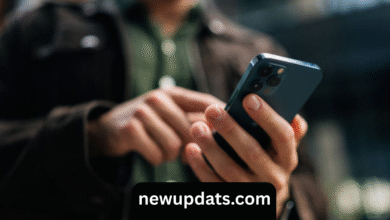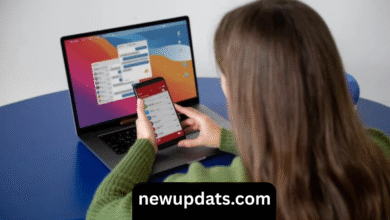The term “price charalabush” may sound like a made-up phrase straight out of a surreal internet thread—and in many ways, it is. But like most internet-born expressions, it carries more depth than you might expect. In this article, we’ll unpack what “price charalabush” really means, where it comes from, why it’s becoming more popular, and how it applies to today’s strange but fascinating economy of hype, scarcity, and digital value.
Whether you’re a marketer, an entrepreneur, a trend-watcher, or just a curious netizen who stumbled across this term, this breakdown is for you.
What is “Price Charalabush”?
At first glance, “price charalabush” sounds like a typo, a joke, or maybe even a new cryptocurrency. And truth be told, it probably started out as a joke. But like many internet-born phrases, it evolved—taking on new meaning in niche communities and slowly becoming a sort of inside term for absurd or inflated pricing in the modern world.
It’s All About the Vibe
“Price charalabush” typically refers to a product or service that is priced in a way that defies logic—yet still manages to sell, often due to hype, branding, or artificial scarcity. It’s not just about high prices; it’s about prices that make you do a double-take and wonder, “Who in their right mind would pay for this?”
The Meme Economy at Work
In meme culture, exaggerated humor often mirrors real-world absurdity. “Price charalabush” represents a growing sentiment that in today’s market—especially online—value is no longer grounded in practicality. It’s driven by hype cycles, influencer buzz, limited-edition drops, and emotional attachment to status or novelty.
A Wink at Modern Consumerism
More than anything, “price charalabush” is a critique of how irrational pricing has become in certain spaces—whether it’s luxury streetwear, NFTs, digital art, or even limited-time food items. It encapsulates the idea that we’re now buying things for the story, not the product.
Where Did This Phrase Come From?
The exact origin of “price charalabush” is murky—like many viral phrases, it seems to have started as internet slang or maybe a made-up term on social media that resonated and caught on.
A Joke Gone Viral
It may have begun as a satirical response to overpriced items on marketplaces—think $80 toast, $1,000 sneakers, or $15,000 NFTs. The kind of thing you screenshot, send to a friend, and caption with “lol this is straight up price charalabush.”
Over time, people started using the term unironically to label things that were either hilariously overpriced or intentionally priced for shock value.
Adopted by Creators and Sellers
Surprisingly, some creators, artists, and marketers began embracing the term. They would play into the irony—labeling something as “charalabush-tier pricing” in a tongue-in-cheek way. It became a branding tool to suggest that something is rare, exclusive, or “not for the average buyer.”
Symbol of Internet Culture
The evolution of the phrase mirrors how online culture shapes and redefines language. What started as a meme quickly grew into a commentary on the disconnect between value and price in digital-era commerce.
Why Do “Charalabush Prices” Work?
If you’ve ever seen something absurdly overpriced and thought, “there’s no way someone would buy that,” you’re not alone. Yet, somehow—people do. So what drives the success of “price charalabush”-style products?
Scarcity Is Powerful
When something is rare—especially if it’s a one-of-a-kind drop or part of a limited collection—people assign it higher value. This isn’t new; scarcity has always influenced pricing. But now, in the age of digital goods and viral moments, that scarcity doesn’t have to be real—it just has to feel real.
Hype is Currency
Sometimes the item itself doesn’t even matter—it’s the experience of being part of a cultural moment. Buyers pay for the status, the bragging rights, or simply to be “in the know.” It’s the same psychology behind sneaker drops, sold-out merch, and viral product launches.
Identity and Self-Expression
Especially in online spaces, purchases are about identity. Buying something ridiculous might just be someone’s way of saying: “I can,” “I’m part of this,” or “I’m supporting the joke.” This is the same logic that explains why someone might spend $500 on a hoodie with a frog meme on it.
Where You’ll See It in Action
You might not hear people say “charalabush” out loud, but the concept is everywhere—especially in markets where emotional value trumps utility.
Digital Art and NFTs
One of the clearest examples is the NFT market. A JPEG selling for hundreds of thousands of dollars? That’s peak “price charalabush.” It’s not about the image—it’s about ownership, exclusivity, and cultural capital.
Hype Fashion
Streetwear drops, designer collabs, and boutique brands thrive on charalabush pricing. Some brands release intentionally overpriced items because the pricing itself becomes part of the allure. It’s less about the product, more about making a statement.
Online Gimmicks
We’ve all seen the viral items: gold-plated French fries, luxury phone cases, or smart water infused with moonlight. These aren’t meant for mass appeal—they’re meant to shock, go viral, and sell to the one person who wants to be in on the joke.
How to Navigate the “Charalabush” Economy
If you’re a creator, business owner, or just someone navigating this brave new world of bizarre pricing, here are a few ways to think about it:
1. Know Your Audience
Charalabush pricing only works when the audience is in on the joke or deeply invested in the culture. It doesn’t work on everyone. If your buyers value authenticity, transparency, and practicality, don’t try to play the ironic pricing game—it’ll backfire.
2. Use It Wisely
There’s a time and place for exaggerated pricing. Limited runs, art projects, or campaign-based promotions can be fertile ground. But use this power sparingly. Overuse leads to distrust, backlash, or simply being ignored.
3. Stay Playful, Not Pretentious
The best “price charalabush” examples are self-aware. They don’t take themselves too seriously. That’s part of the charm. If you’re going to ride the wave, lean into the humor and community—don’t try to act like you’re reinventing the wheel.
Final Thoughts
“Price charalabush” may have started as a joke, but like many internet trends, it revealed something deeper about how we live and buy in a hyperconnected world. Today’s markets are no longer dictated by supply and demand alone—they’re driven by perception, personality, and sometimes pure chaos.
Whether you see it as satire, social commentary, or a smart marketing tactic, one thing’s clear: the charalabush mindset isn’t going away anytime soon. So the next time you see something with a price tag that makes your jaw drop, don’t be too surprised—it might just be another classic case of price charalabush.




